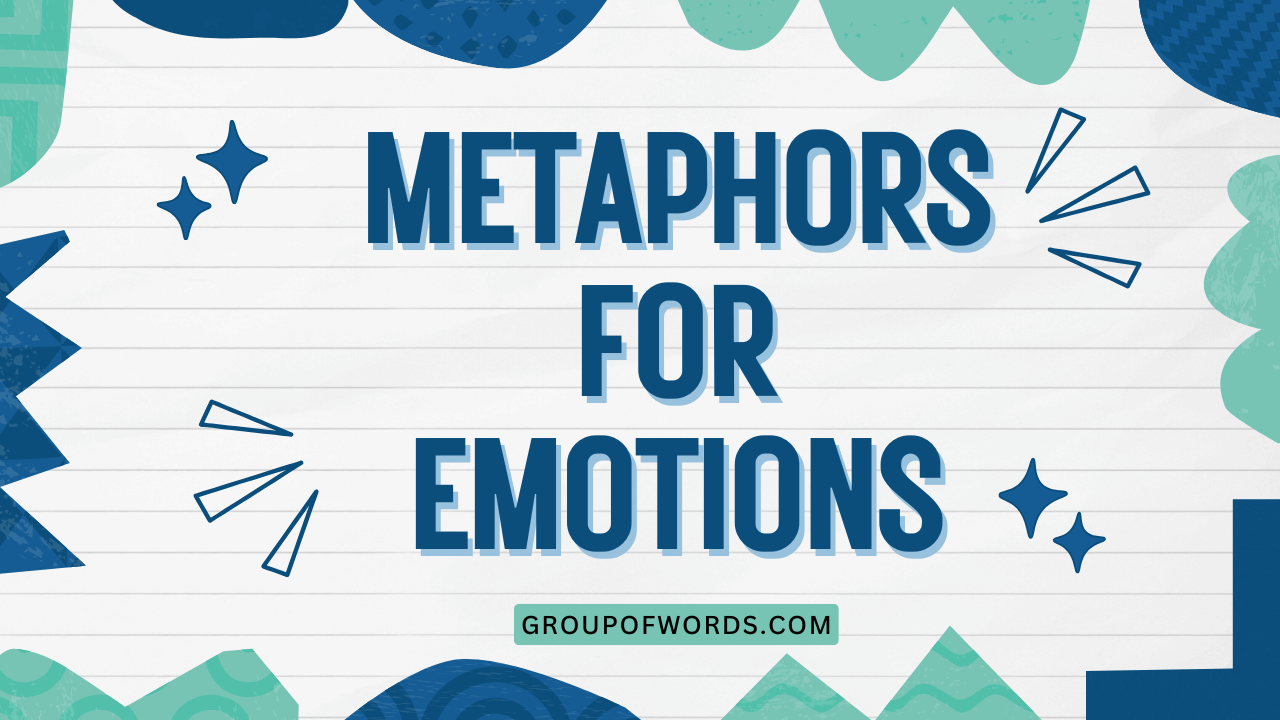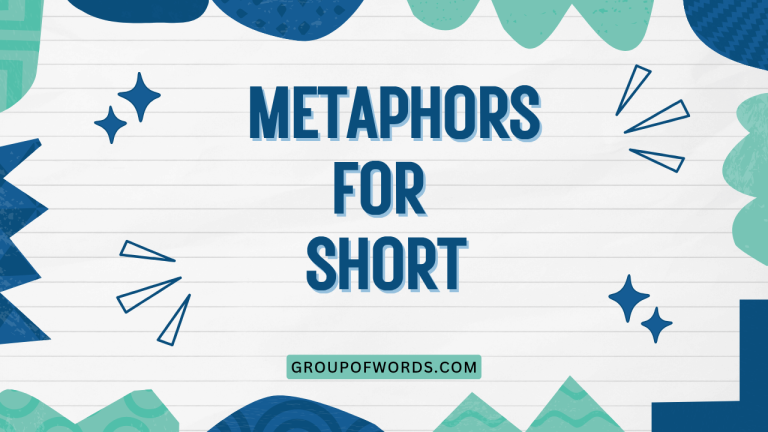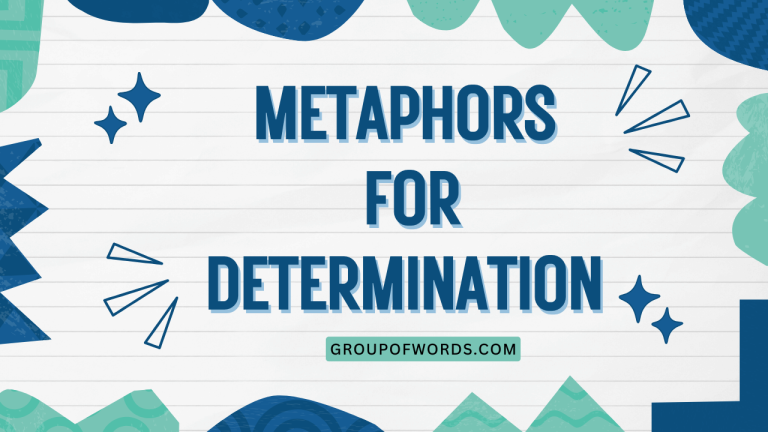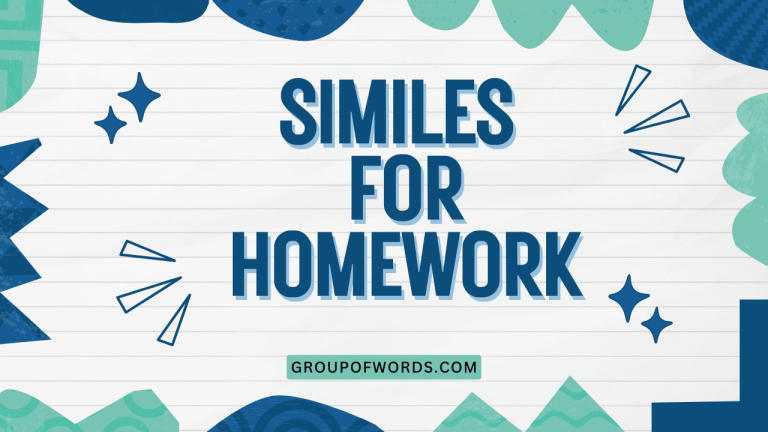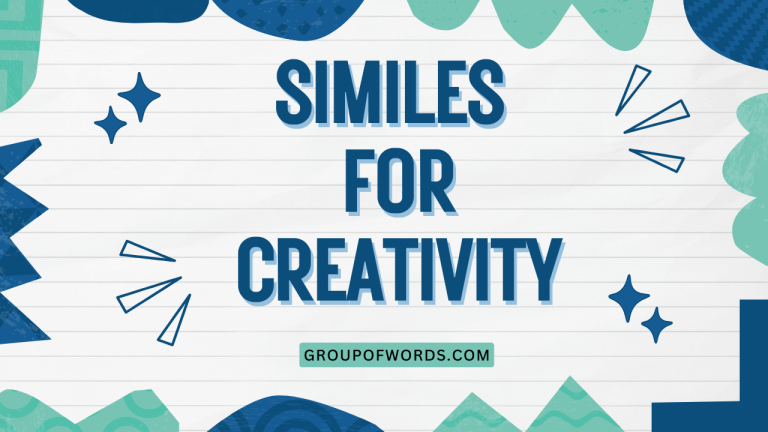Metaphors for Emotions: Expressing Feelings Figuratively
Understanding how we use metaphors to describe emotions is crucial for mastering English. Emotions are often abstract and intangible, making them difficult to articulate directly.
Metaphors provide a vivid and relatable way to express these complex feelings. This article delves into the world of emotional metaphors, exploring their types, structures, and usage rules.
Whether you are an English language learner, a writer seeking to enhance your descriptive abilities, or simply someone interested in the nuances of language, this guide will equip you with the knowledge and tools to effectively use metaphors for emotions.
Table of Contents
- Introduction
- Definition of Metaphors for Emotions
- Structural Breakdown
- Types and Categories of Emotional Metaphors
- Examples of Emotional Metaphors
- Usage Rules for Emotional Metaphors
- Common Mistakes
- Practice Exercises
- Advanced Topics
- FAQ
- Conclusion
Definition of Metaphors for Emotions
A metaphor is a figure of speech that directly compares two unrelated things without using “like” or “as.” Metaphors for emotions are specific instances where a feeling is described by relating it to something else that is more concrete or easily understood. This allows us to express subjective experiences in a more vivid and relatable way.
The function of emotional metaphors is to bridge the gap between abstract feelings and tangible concepts, making emotions more accessible and comprehensible. They add depth and color to our language, allowing for richer and more nuanced communication.
Consider, for example, saying “He was boiling with anger” instead of “He was angry.” The metaphor of boiling conveys a much stronger sense of intensity.
Emotional metaphors are prevalent in everyday language, literature, and even scientific discourse. They reflect how deeply ingrained figurative language is in our understanding and expression of emotions.
By understanding the underlying structure and common types of emotional metaphors, we can better interpret and use them to enhance our communication skills.
Structural Breakdown
The structure of an emotional metaphor typically involves two key elements: the target domain (the emotion being described) and the source domain (the concrete concept used to describe it). The source domain provides a framework for understanding the target domain. For instance, in the metaphor “She was drowning in sorrow,” the target domain is the emotion of sorrow, and the source domain is drowning. The metaphor suggests that the feeling of sorrow is overwhelming and inescapable, similar to being submerged in water.
The effectiveness of a metaphor depends on the shared understanding of the source domain. The more familiar and relatable the source domain, the more easily the metaphor will be understood.
Good metaphors create a strong connection between the abstract emotion and the concrete image, allowing the listener or reader to grasp the intensity and nature of the feeling being described. The structural relationship can also involve implicit mappings, where certain aspects of the source domain correspond to specific aspects of the target domain.
In the example above, the feeling of being overwhelmed corresponds to the physical sensation of being unable to breathe while drowning.
Consider the metaphor “His heart was a stone.” Here, the target domain is the emotional state of the person, and the source domain is a stone. The metaphor implies that the person is emotionally cold, unfeeling, or hardened.
The hardness and lack of life associated with a stone are used to convey the person’s emotional state. Understanding this structural breakdown allows us to analyze and appreciate the power and nuance of emotional metaphors.
Types and Categories of Emotional Metaphors
Emotional metaphors can be categorized based on the type of source domain used to describe the emotion. Here are some common categories:
Container Metaphors
Container metaphors represent emotions as being contained within a vessel or space. These metaphors often involve the idea of emotions overflowing, being bottled up, or being released.
They can also suggest that emotions are building up inside someone, creating pressure or tension. The container represents the person experiencing the emotion, while the contents represent the emotion itself.
Natural Force Metaphors
Natural force metaphors compare emotions to powerful natural phenomena like storms, earthquakes, or floods. These metaphors emphasize the intensity and uncontrollable nature of certain emotions.
They can also highlight the destructive potential of unchecked emotions. The natural force symbolizes the overwhelming power of the emotion.
Temperature Metaphors
Temperature metaphors use hot and cold to describe emotions. Hot emotions like anger and passion are often described as being fiery or boiling, while cold emotions like sadness and indifference are described as being icy or frigid.
These metaphors leverage our physical experience of temperature to convey the emotional intensity.
Weight Metaphors
Weight metaphors describe emotions in terms of heaviness or lightness. Sadness, grief, and guilt are often described as being heavy burdens, while happiness and joy are described as being light and airy.
These metaphors connect the emotional experience to the physical sensation of weight.
Light and Dark Metaphors
Light and dark metaphors associate positive emotions with light and negative emotions with darkness. Happiness, hope, and understanding are often described as being bright or illuminating, while sadness, despair, and confusion are described as being dark or shadowy.
These metaphors draw on our sensory experience of light and darkness to convey emotional states.
Illness Metaphors
Illness metaphors compare emotions to physical ailments. These metaphors often suggest that emotions can be debilitating or contagious.
For example, love can be described as an addiction, and sadness can be described as a disease. These metaphors highlight the potentially harmful effects of certain emotions.
Animal Metaphors
Animal metaphors use animal characteristics to describe emotions. These metaphors draw on the stereotypical traits associated with different animals.
For example, anger might be described as a lion’s roar, and fear might be described as a mouse’s squeak. These metaphors provide a vivid and concise way to convey emotional states.
War Metaphors
War metaphors describe emotions as battles or conflicts. These metaphors emphasize the struggle and intensity associated with certain emotions.
For example, one might say they are battling depression or fighting their fears. These metaphors portray emotions as adversaries to be overcome.
Examples of Emotional Metaphors
The following tables provide examples of emotional metaphors categorized by type. Each table contains a range of examples to illustrate the diverse ways in which emotions can be expressed figuratively.
The first table showcases container metaphors, which depict emotions as being held within a vessel, emphasizing concepts like containment, overflow, and release. These metaphors help visualize how emotions can be managed, suppressed, or expressed.
| Category | Metaphor | Explanation |
|---|---|---|
| Container | He was full of joy. | Joy is depicted as filling him up completely. |
| Container | She bottled up her anger. | Anger is contained and suppressed. |
| Container | The grief overflowed. | Grief is abundant and uncontrollable. |
| Container | He was drowning in sorrow. | Sorrow is overwhelming and inescapable. |
| Container | She was brimming with excitement. | Excitement is building up inside her. |
| Container | His heart was bursting with pride. | Pride is expanding and almost uncontrollable. |
| Container | She couldn’t contain her laughter. | Laughter is trying to escape. |
| Container | He was swimming in self-pity. | Self-pity is surrounding and engulfing him. |
| Container | The room was thick with tension. | Tension is palpable and pervasive. |
| Container | She felt empty inside. | Lack of emotion or fulfillment. |
| Container | He was a well of sadness. | A deep and seemingly endless source of sadness. |
| Container | Her anger spilled over. | Anger became uncontrollable and affected others. |
| Container | He kept his feelings locked inside. | Emotions are suppressed and hidden. |
| Container | She was a vessel of compassion. | Full of and expressing compassion. |
| Container | He was steeped in regret. | Completely immersed and consumed by regret. |
| Container | Her patience was wearing thin. | The container of patience is almost empty. |
| Container | He was filled with dread. | Dread occupied all his thoughts and feelings. |
| Container | She had a reservoir of strength. | A large and available supply of inner strength. |
| Container | He was buried in despair. | Completely overwhelmed and suffocated by despair. |
| Container | Her joy knew no bounds. | Joy that is limitless and uncontained. |
| Container | He was overflowing with gratitude. | Gratitude that is abundant and overflowing. |
| Container | She felt a void in her heart. | An empty space where love or connection should be. |
| Container | He was submerged in anxiety. | Completely overcome and surrounded by anxiety. |
| Container | Her spirit was crushed. | Her inner self was broken and defeated. |
The second table presents natural force metaphors, which use elements like storms, earthquakes, and floods to describe the intensity and uncontrollable nature of emotions. These metaphors vividly depict the overwhelming power of feelings.
| Category | Metaphor | Explanation |
|---|---|---|
| Natural Force | A wave of sadness washed over her. | Sadness is sudden and overwhelming. |
| Natural Force | His anger erupted like a volcano. | Anger is explosive and uncontrollable. |
| Natural Force | She weathered the storm of grief. | Grief is a challenging and difficult period. |
| Natural Force | He was swept away by her charm. | Charm is irresistible and captivating. |
| Natural Force | A torrent of tears flowed down her face. | Tears are abundant and unstoppable. |
| Natural Force | Her love was a raging fire. | Love is intense and passionate. |
| Natural Force | He was frozen with fear. | Fear is paralyzing and immobilizing. |
| Natural Force | A whirlwind of emotions consumed her. | Emotions are chaotic and overwhelming. |
| Natural Force | He felt the earth move beneath his feet. | A feeling of profound shock or surprise. |
| Natural Force | She was a force of nature. | Describes someone with immense energy and influence. |
| Natural Force | His words were a thunderclap. | Words that are sudden, shocking, and impactful. |
| Natural Force | She was adrift on a sea of doubt. | Lost and uncertain in a vast and confusing situation. |
| Natural Force | He was caught in a crosscurrent of emotions. | Pulled in conflicting emotional directions. |
| Natural Force | Her joy was like sunshine after a storm. | Happiness following a difficult period. |
| Natural Force | He unleashed a hurricane of anger. | Released a destructive and powerful outburst of anger. |
| Natural Force | She was grounded by her fear. | Unable to move or act due to overwhelming fear. |
| Natural Force | His spirit soared like an eagle. | Feeling uplifted and empowered. |
| Natural Force | She was tossed about by waves of anxiety. | Experiencing intense and fluctuating anxiety. |
| Natural Force | He was swept away by a flood of memories. | Overwhelmed by a sudden and intense recollection of memories. |
| Natural Force | Her determination was an unyielding mountain. | Strong, steadfast, and immovable determination. |
| Natural Force | He was a beacon of hope in the darkness. | A source of guidance and optimism in a difficult situation. |
| Natural Force | She navigated the treacherous waters of grief. | Dealing with the difficult and painful process of grieving. |
| Natural Force | His passion burned like a wildfire. | Intense, uncontrollable, and rapidly spreading passion. |
| Natural Force | She was anchored by her love for her family. | Kept stable and secure by her strong family bonds. |
The third table illustrates temperature metaphors, where emotions are described using terms associated with heat and cold. “Hot” emotions like anger and passion are often described as fiery, while “cold” emotions like sadness and indifference are described as icy.
| Category | Metaphor | Explanation |
|---|---|---|
| Temperature | He was boiling with anger. | Anger is intense and heated. |
| Temperature | She gave him a cold shoulder. | Indifference and rejection. |
| Temperature | Their love was a burning flame. | Love is passionate and intense. |
| Temperature | He felt a chill of fear. | Fear is unsettling and frightening. |
| Temperature | She had a warm heart. | Kindness and compassion. |
| Temperature | He was hot under the collar. | Agitated and angry. |
| Temperature | She felt icy dread. | Intense and chilling fear. |
| Temperature | His temper flared. | Sudden outburst of anger. |
| Temperature | She was lukewarm about the idea. | Unenthusiastic and indifferent. |
| Temperature | He radiated warmth and kindness. | Projected positive and friendly emotions. |
| Temperature | She had a frosty demeanor. | Unfriendly and unwelcoming attitude. |
| Temperature | His passion smoldered beneath the surface. | Intense emotion that is restrained but still present. |
| Temperature | She felt the heat of embarrassment. | Intense discomfort and shame. |
| Temperature | He was frozen in disbelief. | Unable to react due to shock. |
| Temperature | She had a fiery spirit. | Passionate and energetic personality. |
| Temperature | He felt a cold wave of despair. | Overwhelming and chilling hopelessness. |
| Temperature | She was ice-cold with rage. | Extremely angry but composed. |
| Temperature | His words were like a soothing balm. | Comforting and healing words. |
| Temperature | She had a heated argument. | Intense and passionate disagreement. |
| Temperature | He felt a cold shiver of anticipation. | Excitement mixed with nervousness. |
| Temperature | She warmed up to him over time. | Grew to like him more. |
| Temperature | He was burning with curiosity. | Intensely curious and eager to know. |
| Temperature | She felt a cool sense of calm. | Peaceful and composed feeling. |
| Temperature | His anger reached a boiling point. | Anger became uncontrollable. |
The fourth table presents weight metaphors, which describe emotions in terms of heaviness or lightness. Sadness, grief, and guilt are often portrayed as heavy burdens, while happiness and joy are described as light and airy.
| Category | Metaphor | Explanation |
|---|---|---|
| Weight | He carried the weight of the world on his shoulders. | Responsibility and burden. |
| Weight | She felt light as a feather. | Happiness and joy. |
| Weight | The guilt was a heavy burden. | Guilt is oppressive and difficult to bear. |
| Weight | He felt weighed down by sorrow. | Sorrow is debilitating and burdensome. |
| Weight | Her heart felt heavy with grief. | Grief is emotionally burdensome. |
| Weight | He felt a lightness of spirit. | Happiness and freedom from worry. |
| Weight | She was burdened by regret. | Regret is a heavy emotional load. |
| Weight | He felt the weight lift from his shoulders. | Relief from responsibility or stress. |
| Weight | She carried the emotional baggage of her past. | Past experiences that continue to affect her emotionally. |
| Weight | He felt the crushing weight of expectation. | Pressure to meet high expectations. |
| Weight | She was weighed down by anxiety. | Anxiety that is burdensome and oppressive. |
| Weight | He felt a feather-light sense of relief. | Minimal but noticeable sense of relief. |
| Weight | She carried the heavy secret for years. | A secret that was emotionally burdensome to keep. |
| Weight | He felt the weight of responsibility. | Burden of obligation and duty. |
| Weight | She was lifted by his encouragement. | Encouragement that made her feel lighter and more positive. |
| Weight | He felt the weight of his decision. | The significance and impact of his choice. |
| Weight | She was burdened with self-doubt. | Self-doubt that was oppressive and limiting. |
| Weight | He felt the lightness of forgiveness. | Relief and freedom from guilt and resentment. |
| Weight | She carried the heavy memories of loss. | Painful and burdensome memories of a lost loved one. |
| Weight | He felt the weight of societal expectations. | Pressure to conform to societal norms and standards. |
| Weight | She was lighthearted and carefree. | Happy and without worries. |
| Weight | He felt the crushing blow of disappointment. | Overwhelming and devastating disappointment. |
| Weight | She was weighed down by the past. | Past experiences that were emotionally burdensome. |
| Weight | He felt a weight of gratitude in his heart. | Deep and meaningful appreciation. |
The fifth table focuses on light and dark metaphors, which associate positive emotions with light and negative emotions with darkness. Happiness, hope, and understanding are frequently described as bright or illuminating, while sadness, despair, and confusion are portrayed as dark or shadowy.
| Category | Metaphor | Explanation |
|---|---|---|
| Light/Dark | She brought light into his life. | She brought happiness and positivity. |
| Light/Dark | He was shrouded in darkness. | Overwhelmed by sadness or despair. |
| Light/Dark | A glimmer of hope appeared. | A small sign of optimism. |
| Light/Dark | She was in the shadows of grief. | Experiencing the sadness and pain of grief. |
| Light/Dark | His future looked bright. | His future is promising and positive. |
| Light/Dark | She cast a shadow of doubt. | Raised uncertainty or suspicion. |
| Light/Dark | He was enlightened by her wisdom. | Gained understanding and insight. |
| Light/Dark | She was lost in the darkness of despair. | Completely overwhelmed by hopelessness. |
| Light/Dark | His smile lit up the room. | His smile brought joy and happiness. |
| Light/Dark | She lived in the shadow of her past. | Haunted and influenced by past experiences. |
| Light/Dark | He was a beacon of hope. | A source of guidance and optimism. |
| Light/Dark | She was enveloped in a cloud of sadness. | Surrounded and overwhelmed by sadness. |
| Light/Dark | His words shed light on the situation. | Clarified and explained the situation. |
| Light/Dark | She was plunged into darkness. | Sudden and overwhelming despair. |
| Light/Dark | He radiated joy and happiness. | Projected positive and cheerful emotions. |
| Light/Dark | She was overshadowed by her sister’s success. | Made to feel less significant due to her sister’s achievements. |
| Light/Dark | His presence illuminated the room. | His presence made the atmosphere more joyful and positive. |
| Light/Dark | She was consumed by the darkness of depression. | Overwhelmed and debilitated by depression. |
| Light/Dark | He saw the light at the end of the tunnel. | Felt hope and optimism after a difficult period. |
| Light/Dark | She was veiled in secrecy. | Surrounded by mystery and hidden information. |
Usage Rules for Emotional Metaphors
When using emotional metaphors, it’s essential to ensure they are appropriate and effective. Here are some key usage rules:
- Clarity: The metaphor should be easily understood and relatable. Avoid obscure or overly complex metaphors that might confuse the reader or listener.
- Relevance: The source domain should be relevant to the target emotion. The comparison should make logical sense and highlight meaningful aspects of the emotion.
- Consistency: Maintain consistency within the metaphor. Avoid mixing different metaphors that clash or create a confusing image.
- Originality: While common metaphors can be effective, strive for originality to make your writing or speech more engaging and memorable.
- Cultural Sensitivity: Be aware of cultural differences in the interpretation of metaphors. Some metaphors may have different connotations in different cultures.
- Context: Consider the context in which the metaphor is used. The appropriateness of a metaphor depends on the tone, audience, and purpose of the communication.
It’s also important to avoid clichés and overused metaphors, as they can lose their impact and sound uninspired. Instead, try to create fresh and imaginative comparisons that capture the essence of the emotion in a unique way.
For example, instead of saying “He was heartbroken,” you could say “His heart shattered like glass.”
Common Mistakes
Here are some common mistakes to avoid when using metaphors for emotions:
- Mixed Metaphors: Combining two or more incompatible metaphors, leading to confusion.
- Incorrect: “He was skating on thin ice while swimming in a sea of troubles.”
- Correct: “He was skating on thin ice.” OR “He was swimming in a sea of troubles.”
- Clichés: Using overused and unoriginal metaphors that have lost their impact.
- Incorrect: “She was as happy as a lark.”
- Correct: “She was radiant with joy, her laughter echoing through the room.”
- Inappropriate Metaphors: Using metaphors that are not relevant or fitting for the emotion being described.
- Incorrect: “He was as quiet as a volcano.” (Volcanoes are not quiet.)
- Correct: “He was as quiet as a mouse.”
- Overly Complex Metaphors: Using metaphors that are too complicated or abstract for the audience to understand.
- Incorrect: “His emotions were a fractal of existential angst, spiraling into the abyss of self-doubt.”
- Correct: “He was struggling with deep self-doubt.”
Practice Exercises
Test your understanding of emotional metaphors with these exercises.
Exercise 1: Identify the type of emotional metaphor used in each sentence.
| Question | Answer |
|---|---|
| 1. She was a volcano ready to erupt. | Natural Force |
| 2. He carried the weight of their failure. | Weight |
| 3. Her anger was a burning flame. | Temperature |
| 4. He was drowning in despair. | Container |
| 5. She brought light into his dark world. | Light/Dark |
| 6. His heart was an icebox. | Temperature |
| 7. She was bursting with excitement. | Container |
| 8. He felt the crushing weight of expectation. | Weight |
| 9. A wave of sadness washed over him. | Natural Force |
| 10. She was shrouded in mystery. | Light/Dark |
Exercise 2: Rewrite the following sentences using emotional metaphors.
| Question | Answer |
|---|---|
| 1. He was very angry. | He was boiling with rage. |
| 2. She was extremely happy. | She was floating on cloud nine. |
| 3. He was very sad. | He was lost in a sea of sorrow. |
| 4. She was very afraid. | She was frozen with fear. |
| 5. He was very worried. | He was carrying the weight of his worries. |
| 6. She was very surprised. | She was thunderstruck by the news. |
| 7. He was very confused. | He was lost in a fog of confusion. |
| 8. She was very hopeful. | She saw a glimmer of hope on the horizon. |
| 9. He was very guilty. | He was burdened by guilt. |
| 10. She was very relieved. | She felt a weight lift from her shoulders. |
Exercise 3: Identify the emotion being described in each metaphor.
| Question | Answer |
|---|---|
| 1. He was a volcano about to erupt. | Anger |
| 2. She was floating on air. | Happiness |
| 3. He was drowning in self-pity. | Sadness/Self-pity |
| 4. She had a heart of stone. | Coldness/Lack of Emotion |
| 5. He was climbing a mountain of despair. | Despair |
| 6. She was a beacon of hope. | Hope |
| 7. He was wrestling with his conscience. | Guilt |
| 8. She was radiating joy. | Happiness |
| 9. He was lost in the wilderness of his thoughts. | Confusion/Contemplation |
| 10. She was dancing with delight. | Joy/Excitement |
Advanced Topics
For advanced learners, exploring the cognitive linguistics behind emotional metaphors can provide a deeper understanding. Cognitive linguistics suggests that metaphors are not merely decorative language devices but fundamental to how we conceptualize abstract concepts like emotions. The Conceptual Metaphor Theory, developed by George Lakoff and Mark Johnson, argues that our understanding of abstract concepts is grounded in our physical experiences. For example, the metaphor “ANGER IS HEAT” is rooted in our physical experience of feeling hot when we are angry.
Another advanced topic is the use of extended metaphors, where a single metaphor is developed and elaborated throughout a text or speech. This can create a powerful and cohesive effect, allowing for a more nuanced and detailed exploration of the emotion being described. For example, a writer might use the metaphor of a storm to describe the experience of grief, exploring different aspects of the storm (e.g., the dark clouds, the torrential rain, the destructive winds) to represent different facets of the grieving process.
Furthermore, consider the use of metaphorical blends, where two or more metaphors are combined to create a richer and more complex image. This can be a powerful technique for expressing emotions that are multifaceted or contradictory. For instance, one might blend the metaphors of “ANGER IS HEAT” and “ANGER IS A WILD ANIMAL” to describe anger as a fiery beast that is difficult to control.
FAQ
- What is the difference between a metaphor and a simile?
A metaphor directly compares two unrelated things without using “like” or “as,” while a simile uses “like” or “as” to make a comparison. For example, “He is a lion” is a metaphor, while “He is as brave as a lion” is a simile.
- Why are metaphors for emotions important?
Metaphors help us understand and express abstract concepts like emotions by relating them to more concrete and relatable experiences. They add depth, vividness, and nuance to our communication.
- How can I improve my use of emotional metaphors?
Practice using metaphors in your writing and speech. Pay attention to how others use metaphors and experiment with different types of metaphors. Read widely and observe how authors use figurative language to describe emotions.
- Are there any emotions that are difficult to describe with metaphors?
Some emotions, particularly those that are complex or ambiguous, can be challenging to describe with metaphors. However, with creativity and careful consideration, it is usually possible to find a suitable metaphor to convey the essence of the emotion.
- Can metaphors for emotions vary across cultures?
Yes, metaphors for emotions can vary significantly across cultures. Different cultures may have different ways of conceptualizing and expressing emotions, which can be reflected in their use of metaphors. It is important to be aware of these cultural differences to avoid misunderstandings.
Conclusion
Metaphors for emotions are powerful tools for expressing and understanding the complex landscape of human feelings. By using metaphors effectively, we can add depth, vividness, and nuance to our communication, making our writing and speech more engaging and impactful.
Whether you are a language learner, a writer, or simply someone interested in the art of expression, mastering the use of emotional metaphors will enhance your ability to connect with others and convey the richness of human experience. Remember to practice using different types of metaphors, avoid common mistakes, and be mindful of cultural differences to become a skilled and effective communicator.
